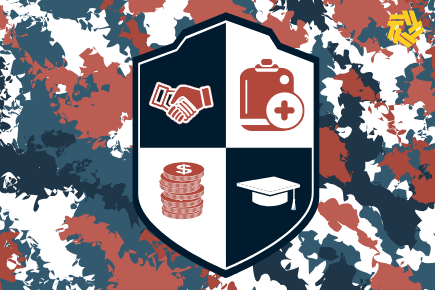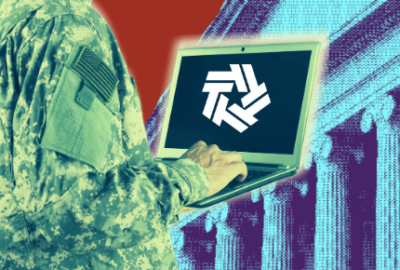

When the pandemic hit the United States, the VA famously switched to mostly virtual visits for primary health care. But telehealth did have some issues.
Best listening experience is on Chrome, Firefox or Safari. Subscribe to Federal Drive’s daily audio interviews on Apple Podcasts or PodcastOne.
When the pandemic hit the United States, the Department of Veterans Affairs famously switched to mostly virtual visits for primary health care. No surprise there — VA was already deep into a plan to be ready for such a disaster. But telehealth did have some issues, mainly having to do with VA Video Connect, the VA system for doing video visits. For the details, the VA’s Deputy Assistant Inspector General for Healthcare Inspections Dr. Julie Kroviak spoke to Federal Drive with Tom Temin.
Interview transcript:
Tom Temin: Dr. Kroviak, good to have you on.
Julie Kroviak: Thanks for having me.
Tom Temin: So give us the top line findings of what you looked at. Because this is such a giant and central issue for VA. It’s almost hard to imagine it not in telemedicine mode.
Julie Kroviak: Yeah, so you would expect that during a global pandemic or any kind of disaster that VA would have been ready to assist their veterans and continue care through a video platform. And that was what we expected to find. However, when we started digging and looking at what actually happened immediately before the pandemic and immediately when the pandemic hit, we didn’t see that they transitioned to a video platform as we would have expected. And while they said their virtual employments increased dramatically, it was mostly via telephone.
Tom Temin: Yeah, I think that’s the other finding that has been trickling out, is that by telephone, I guess it’s virtual in that sense, but is the sense that telephone has some shortcomings relative to video?
Julie Kroviak: So certainly. We absolutely want veterans to get the care they need. And a lot of those encounters can be managed effectively over the telephone. But you are missing the ability to do a more comprehensive or robust exam over the telephone versus a video application.
Tom Temin: You can’t show the doctor something if you had to, and so on. I guess for maybe psychological visits, there is a lot to be seen in backgrounds and in facial expressions and mannerisms that could inform someone doing a behavioral health assessment.
Julie Kroviak: Oh, absolutely. But, even beyond the mental health exams, a patient could report shortness of breath. But recognizing they have edema, or swelling in their legs could be incredibly valuable in gauging how you’re going to manage that patient.
Tom Temin: And what was the primary issue then, with respect to video?
Julie Kroviak: So we actually looked at it a couple of different ways. We looked at volume in terms of these primary care encounters, and how VA adapted immediately when the pandemic hit, and the venue. But we also sent out surveys to primary care providers who were engaging in this type of care, because we wanted to understand their perception and what barriers they felt existed. And hands down. The hindrance was what – not what the providers had access to, they had training, they had the equipment – it was what the veterans had access to. They didn’t always have reliable equipment. They didn’t always have reliable internet connection, and they didn’t have the tools to troubleshoot when necessary to make these appointments happen.
Tom Temin: And what about the scheduling issues? Because I think your report found that there were a couple of different systems that had to be invoked to even make an appointment for a video.
Julie Kroviak: Yeah, so it is a bit trickier than one would think. When we talked to the Office of Connected Care leadership, they informed us that two systems actually have to cooperate and communicate to get these appointments on the books, which will then generate an email to a veteran with a link in it that he or she can click on to communicate with their provider. So there were flaws in that communication of these two systems, as well as flaws in the links for veterans to log on and get that virtual appointment started.
Tom Temin: Yeah, that was a question, having had, I guess as most people have had video visits with their own providers in this era of this pandemic, I found that the platforms are not all that simple. And you know, those of us that are experienced in this kind of thing, have found a little trepidation. So how does VA’s platform compare to say commercial use platforms, which ain’t that good?
Julie Kroviak: So the VA video is actually a commercial application, but again, you’re talking about a population that is very used to those face-to-face traditional settings. And without enough education and practice and repeated use, this population could be seen as being at a disadvantage for use of this technology. VA Video Connect is more reliable in terms of security, over FaceTime and Skype. And the complexities we describe in the report, I think illustrate the challenges that were gonna happen.
Tom Temin: We’re speaking with Dr. Julie Kroviak, she’s deputy assistant inspector general for Healthcare Inspections at the Veterans Affairs Department. And so you had a couple of big recommendations, it looks like VA agreed with them. What were those?
Julie Kroviak: So both of the recommendations went to the undersecretary for Health and we were looking at a review of what hindered the veterans from the equipment and internet reliability side. And then the second recommendation looks at what was available to train them and to assist them when they needed that support, couldn’t connect or couldn’t use the application as it was intended. So two recommendations, but both of them geared towards the veteran side.
Tom Temin: Yeah, and how do you get the right device and internet connections into the hands of veterans that just are in say, VISN 20 and some of those rural areas, or Alaska, or whatever the case might be?
Julie Kroviak: Yeah, so it is a challenge. It’s the beauty of being oversight – we don’t make those decisions for VA. But we do recognize they have had time and they have had money to invest in this program and to understand its limitations. And now we’re asking them to be much more aggressive in putting it forward.
Tom Temin: Got it. And were you able to assess the quality of care, was that part of the scope of this?
Julie Kroviak: So we weren’t looking at quality of care that occurred in traditional versus virtual platforms. And quite frankly, that situation was not unique to VA. Telehealth expands further through VHA, which we hope this report will help them do. I can foresee projects that look at the quality as well.
Tom Temin: Do you get the sense that the access to the broadband and to the equipment could go along and improve as the relatively younger veterans take the place of the really older ones that are not so maybe technical savvy and that are coming to the end of their lives?
Julie Kroviak: Yeah, that’s a great question. We didn’t look at what age group was more savvy in their application of this program, though, I bet we could all guess. But it is that rural, elderly population that I think is the most vulnerable, but would benefit the most from this type of venue.
Tom Temin: In some ways, the whole populations in those areas that are rural and maybe less wealthy, not just veterans, but the people that are living among have the similar situation.
Julie Kroviak: And think of the impact on the caregivers who might be responsible for the transportation for that three-hour drive to a VA. If we can use this – and I know we can – outside of these global disasters, we can really expand the network of care for this population.
Tom Temin: And just for point of reference, give us some of the statistics in numbers of visits that happened virtually both in telephone and in the video.
Julie Kroviak: Yeah, so just to put your mind around it, our pre-pandemic period was Feb. 7, 2020, through March 22, 2020, and face-to-face appointments were about 1.8 million in primary care. That drops in the first six weeks of the pandemic to about 460,000. Not surprising in any way. Telephone visits pre-pandemic are up close to a million. And then that six-week period at the start of the pandemic, they jump up to 2.5 million. Again, not surprising, but it’s that video application that even before the pandemic was low at 12,000. When the pandemic starts, it jumps to 77,000 – an increase but not as robust as you would expect to see and certainly can’t compare with those telephone encounters.
Tom Temin: And by the way, on the telephone encounters, people aren’t calling a call center are they?
Julie Kroviak: No, they’re speaking directly with the provider. And those are quite effective. Medication refills, quick review of “Hey, how is that medication working for you?” maybe some exchange of more objective information – that may be the best way to handle these appointments. But we’re confident it’s not the best way for every type of encounter.
Tom Temin: And just a detail, do we know the extent to which the providers were working virtually versus, I know some of them were in the centers throughout, of course, giving more than just primary care as their visits increased because of the COVID, and so on. But, in other words, what number were people calling and did VA office numbers, switch over to people’s cell phones if they were not in the VA facility?
Julie Kroviak: So we didn’t look at that. But you are right that there were providers working from home certainly more than before the pandemic. But we didn’t examine the issue of how many providers were providing this type of care from the residents and any type of obstacles that occurred because of that.
Tom Temin: I only asked because in calling many, many, many federal agencies throughout the pandemic, not just the VA, but dozens of them, hundreds of them, you never know whether the office phone that’s given in the email will switch over to their cell phone and they’re actually responsive or just goes to a dead mailbox.
Julie Kroviak: Sure, great point. And to be honest, without having looked at those numbers, we do know that providers were still for the most part reporting for duty at the centers, really just trying to limit that patient face-to-face interaction for obvious reasons.
Tom Temin: Got it. Dr. Julie Kroviak is deputy assistant inspector general for Healthcare Inspections at the Veterans Affairs Department. Thanks so much.
Julie Kroviak: Thank you.
Tom Temin: We’ll post this interview along with a link to her report at FederalNewsNetwork.com/FederalDrive. Hear the Federal Drive on your schedule, subscribe at Apple Podcasts or wherever you get your shows.
Copyright © 2025 Federal News Network. All rights reserved. This website is not intended for users located within the European Economic Area.
Tom Temin is host of the Federal Drive and has been providing insight on federal technology and management issues for more than 30 years.
Follow @tteminWFED


